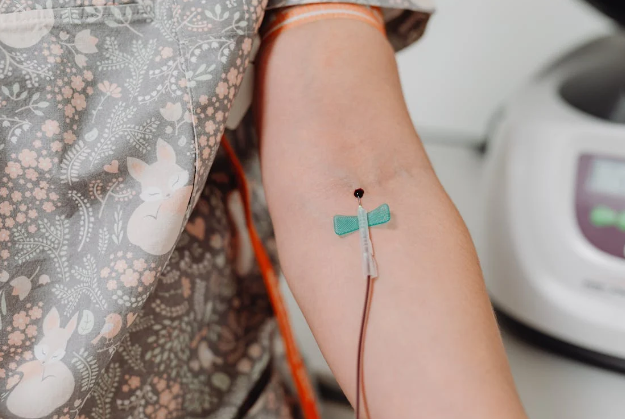Investigating the Multifaceted Health Issues Associated With Port-a-Catheters

In recent years, the use of port-a-catheters has become increasingly prevalent in medical settings. It offers a convenient and efficient way to administer treatments such as chemotherapy and intravenous therapies.
While these devices have undoubtedly improved the quality of life for many patients, concerns have arisen regarding the health issues associated with their use.
In this article, we will discuss the various aspects of health concerns related to port-a-catheters, shedding light on both the benefits and risks involved.
Device Functionality and Purpose:
Port-a-catheters, also known as implantable venous access devices, serve a pivotal role in delivering medical treatments directly into the bloodstream. Typically implanted under the skin, these devices consist of a reservoir and a catheter that is threaded into a large vein.
One primary advantage is the reduction in the need for frequent needle insertions, enhancing patient comfort during prolonged treatment periods. These devices are commonly employed in cancer treatment.
This allows for the administration of chemotherapy drugs, as well as in other medical scenarios requiring regular intravenous therapies.
Infection Risks and Complications:
Despite their benefits, port-a-catheters pose inherent infection risks. The entry point where the catheter penetrates the skin creates a potential pathway for bacteria to enter the bloodstream, leading to infections. NIH notes that common bacteria in this context include Pseudomonas Aeruginosa and Staphylococcus species.
Infections can range from localized skin issues to more severe systemic complications, necessitating prompt medical attention. Healthcare providers must adhere to stringent aseptic techniques during the insertion and maintenance of port-a-catheters to mitigate the risk of infections.
Catheter-Related Thrombosis:
The presence of a catheter within a vein increases the risk of catheter-related thrombosis, a condition where blood clots form around the catheter. This poses a potential threat to patients undergoing long-term treatments.
This is because these clots can impede the flow of blood and compromise the effectiveness of the device. Understanding the risk factors, such as prolonged catheter use and specific medical conditions, is essential for healthcare professionals to implement preventive measures.
Skin and Tissue Reactions:
Patients with port-a-catheters may experience skin and tissue reactions at the insertion site. Mayo Clinic notes that while it is normal to experience some soreness, you must report to your doctor if the swelling persists. Allergic reactions to materials used in the device or irritations from adhesives are not uncommon.
Proper site care, including regular cleaning and monitoring for any abnormalities, is crucial to identify and address these reactions promptly. Timely intervention can prevent complications and ensure the ongoing functionality of the port-a-catheter.
Psychosocial Impact on Patients:
Living with a port-a-catheter can have profound psychosocial implications for patients. The alteration of one’s body image, coupled with the challenges of managing a chronic condition, may lead to emotional distress.
Patients may experience anxiety, depression, or changes in self-esteem. Support systems, including counseling services and patient advocacy groups, play a crucial role in helping individuals cope with these psychosocial challenges.
Legal Implications and Lawsuits:
According to TorHoerman Law, there have been an increasing number of lawsuits related to port-a-catheters in recent years. This has cast a spotlight on potential issues within the manufacturing and usage of these devices. Allegations range from manufacturing defects, such as faulty materials leading to device malfunction, to claims of inadequate warnings regarding potential health risks.
The Bard PowerPort is one port-a-cath device that these complications are frequently associated with. In recent years, numerous affected individuals have come forward to initiate a lawsuit against the manufacturer of the device. Lawsuit Legal News reports that, as of March 2024, there are 106 total pending lawsuits in Bard PowerPort MDL.
In specific cases, patients have reported port-a-catheter migration symptoms, wherein the device moves from its original implanted position. This migration can lead to complications such as catheter dislodgement, increasing the risk of infection and diminishing the effectiveness of treatments.
The inclusion of port-a-catheter migration reports in lawsuits emphasizes the need for heightened scrutiny during device insertion and ongoing monitoring to address any anomalies.
Additionally, instances of medical malpractice, wherein healthcare professionals fail to adhere to proper insertion and maintenance protocols, have been highlighted in legal proceedings. These legal developments underscore the importance of rigorous quality control measures, comprehensive patient education, and adherence to best practices in the medical community.
Future Innovations and Improvements:
The future of port-a-catheters lies in ongoing research and innovative advancements aimed at addressing current health concerns. Researchers are exploring materials with reduced allergic potential, improved catheter designs to minimize thrombosis risk, and enhanced infection prevention strategies.
As technology progresses, these innovations aim to improve the overall safety and efficacy of port-a-catheters. This will make sure that patients can benefit from these devices with minimized health risks. Continued collaboration between medical professionals, researchers, and manufacturers is crucial to drive positive changes in the landscape of implantable venous access devices.
In conclusion, the widespread adoption of port-a-catheters has undeniably transformed medical treatments, particularly in cancer care. However, their usage is not without concerns, encompassing infection risks, thrombosis, psychosocial impacts, and legal ramifications.
Heightened awareness, stringent protocols, and ongoing innovations are imperative to navigate these challenges. Legal actions underscore the significance of quality control and patient safety. As the medical community collaborates on advancements, future port-a-catheter iterations aim to mitigate risks, ensuring patient well-being.







